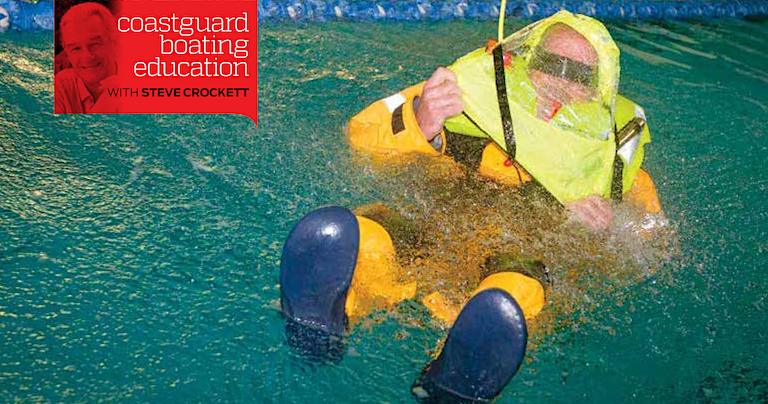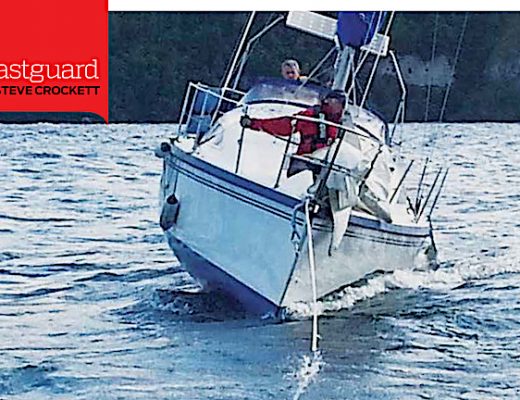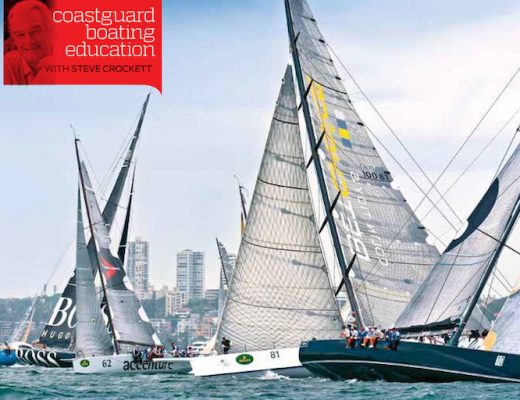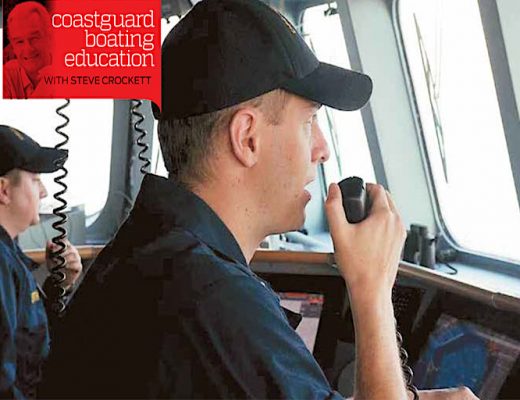HOW LONG WILL YOU LAST IN COLD WATER? BEST TO AVOID THAT SITUATION ALTOGETHER. HERE’S WHAT TO REMEMBER …
If you hark back to last month’s column, you might recall a hypothetical situation in which two ill-prepared characters found themselves in the drink after a casual fishing trip.
Now consider that the average water temperature in Auckland from June to October is around 15°C. So imagine the temps around the South Island! Recent studies have shown that cold water immersion is one of the more serious dangers to recreational mariners.
It is estimated that, upon sudden immersion in water with a temperature of less than 15°C, you have 1 minute to bring your breathing under control.
Then you have expect approximately 10 minutes of useful movement, and expect to lose consciousness (dependent upon your level of fitness) in about an hour or so.
My personal best time to complete the Man Overboard evolution maneuverer in a sailing yacht is 27seconds, but that was knowing the exact moment that the dummy was thrown overboard, in perfect weather conditions, and basically doing a 360 with the yacht. (That doesn’t include the time taken for bringing the dummy back on board).
Those 27 seconds would have felt like 27 minutes for a person in the water. And even longer of the water was chilling them to the bone.
So, what about those blokes in the last issue? What happened to them? What could they have done to prevent this from happening?
Firstly, if you intend to make alterations to your vessel, such as repowering it, seek professional advice. Extra power and weight on an older vessel can cause structural damage. There are some excellent case studies and recent examples in Maritime NZ’s latest newsletter. Go to maritimenz.govt.nz and search “Lookout June 2015”.
REMEMBER L.I.F.E.S.
L FOR LIFEJACKETS – Get them on now if you’re not already wearing them!
I FOR INVESTIGATE – find out where the problem is; if you have to rip the interior apart, do it!
F FOR FIX – STOP OR SLOW THE FLOODING – Get a good bilge pump fitted and make sure it works. A 38mm hole in your boat will let water in at around 100 L/min. The average bilge pump fitted to a small recreational vessel (usually around 500GPH) will eject water at around 35 L/min. A 2000GPH pump will just keep up with the influx at 126 L/min. So, do whatever you can to stop the water coming in. Plug the crack or hole with whatever you have available e.g. towels, spare clothing, cushions etc. Or better still; carry an emergency repair kit with lots of epoxy putty or mastic.
E FOR EMIT – Make the call now! Do not hesitate. We recommend that you carry at least two forms of communication. Ideally you will have a DSC capable VHF radio on board your vessel. So, make that Distress Alert and follow up with a MAYDAY call. Don’t forget to include the most important piece of information – your position! A GPS coordinate is ideal, but a simple approximate range and bearing from an object or island is better than nothing.
Use your cellphone as well if your radio is not working, but make sure it is in a waterproof bag. You can always dial 111. Don’t forget your EPIRB! Your vessel is in grave and imminent danger … it is sinking! Activate your EPIRB or your Personal Locater Beacon (PLB). Time is of the essence here.
Have a Grab Bag ready. It should contain all of the essential emergency equipment you will need should you find yourself having to abandon the vessel.
At a recent Sea Survival conference in Sydney I saw a really nice piece of kit. It was called LifeCell. (http://lifecellmarine.com.au/).
It is a float-free buoyant device in which you can store your entire emergency equipment; flares, torch, v-sheet, mirror, spare VHF hand-held radio, cell phone etc. You can even throw your car keys and wallet in there if you wish. It is waterproof and, unlike the usual flare container, does not become a bucket and sink when you open it in the water.
S FOR STAY– Stay with the boat, if you can. It is much easier to find a large object in the water than just a person’s head.
Safety First
Never ever compromise your safety. Buy an EPIRB and register it. Install a VHF DSC radio and have a callsign and an MMSI. Fit an AIS MOB device to your lifejackets. Purchase a Grab Bag or device such as LifeCell so that you have your equipment at hand.
Most importantly, tell someone where you are going and when you’ll be back.
As I am a glass half-full type of person I have decided that the two semi-fictional characters from last issue are rescued. They climb on top of the upturned hull, and using their lifejacket whistles and the reflection from a knife they are carrying they are able to attract the attention of a passing boat. They are definitely hypothermic … but most assuredly alive.





No Comments